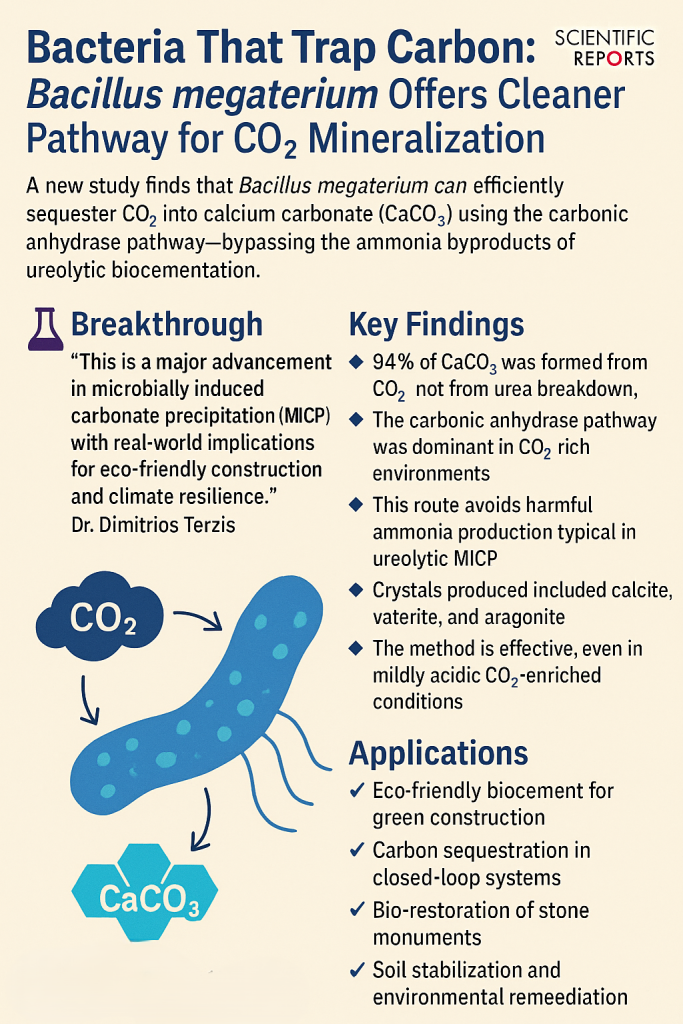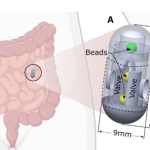In the fight against climate change and unsustainable construction practices, scientists have discovered that the soil bacterium Bacillus megaterium can directly convert carbon dioxide (CO₂) into calcium carbonate (CaCO₃)—without relying on the ammonia-generating urease pathway commonly used in biocementation.
This cleaner microbial method of CO₂ mineralization not only offers a powerful carbon capture tool but also presents a sustainable alternative to cement in building applications.
“This is a major advancement in microbially induced carbonate precipitation (MICP) with real-world implications for eco-friendly construction and climate resilience,” said Dr. Dimitrios Terzis, co-author of the study.
Key Findings
- 94% of CaCO₃ was formed from CO₂, not from urea breakdown.
- The carbonic anhydrase pathway was dominant in CO₂-rich environments.
- This route avoids harmful ammonia production, which is typical in ureolytic MICP.
- Crystals produced included calcite, vaterite, and aragonite—valuable polymorphs in construction.
- The method is effective even in mildly acidic CO₂-enriched conditions.
Why This Matters
Current MICP technologies heavily rely on ureolytic bacteria like Sporosarcina pasteurii, which convert urea into carbonate but release ammonium, a toxic byproduct that demands costly wastewater treatment.
In contrast, B. megaterium:
- Captures atmospheric CO₂ directly
- Bypasses urea entirely under certain conditions
- Offers a non-polluting biomineralization pathway
This makes it ideal for low-carbon construction, soil stabilization, and carbon-negative building materials.
How It Works
Under high CO₂ conditions, B. megaterium activates its carbonic anhydrase (CA) enzyme, which catalyzes the conversion of gaseous CO₂ into bicarbonate. This bicarbonate then reacts with calcium ions to precipitate CaCO₃.
By contrast, under normal conditions, the urease pathway is activated, breaking down urea into ammonium and carbonate. But in closed systems with high CO₂, the CA pathway is preferred.
“This dual enzymatic ability makes B. megaterium a powerful and flexible bioengineer,” the authors wrote.
Applications
- Eco-friendly biocement for green construction
- Carbon sequestration in closed-loop systems
- Bio-restoration of stone monuments
- Soil stabilization and environmental remediation

Reference
Cappa, M., Perego, C., Terzis, D., & Principi, P. (2025). Bacillus megaterium favours CO₂ mineralization into CaCO₃ over the ureolytic pathway. Scientific Reports, 15(1), 21861. https://doi.org/10.1038/s41598-025-07323-9







